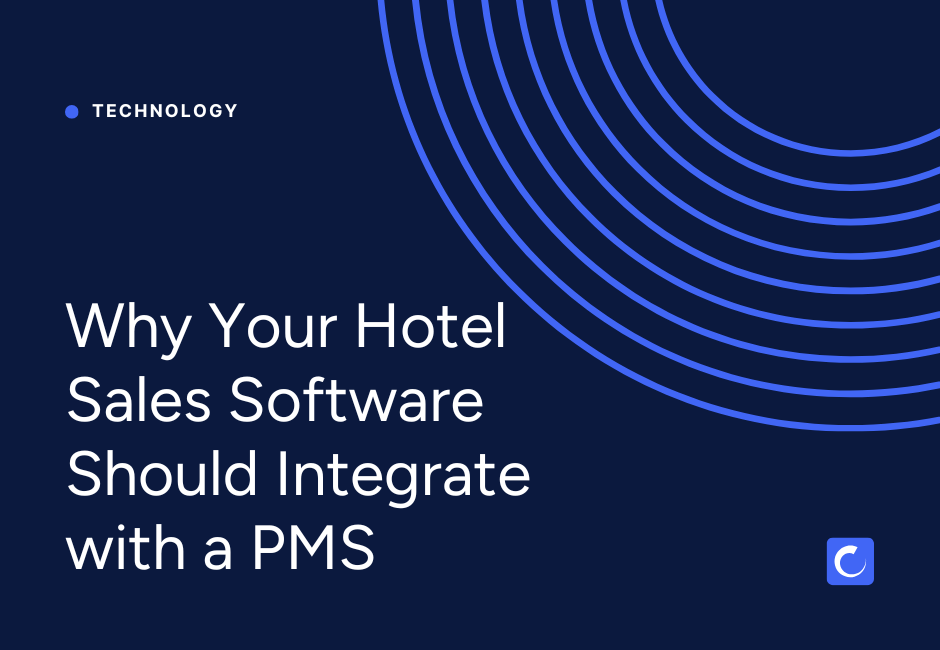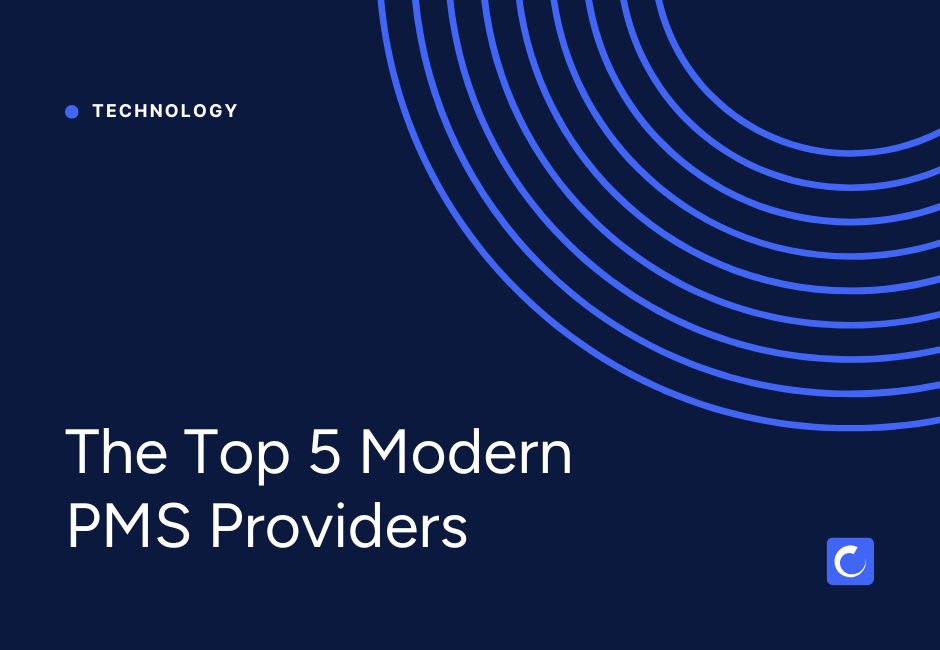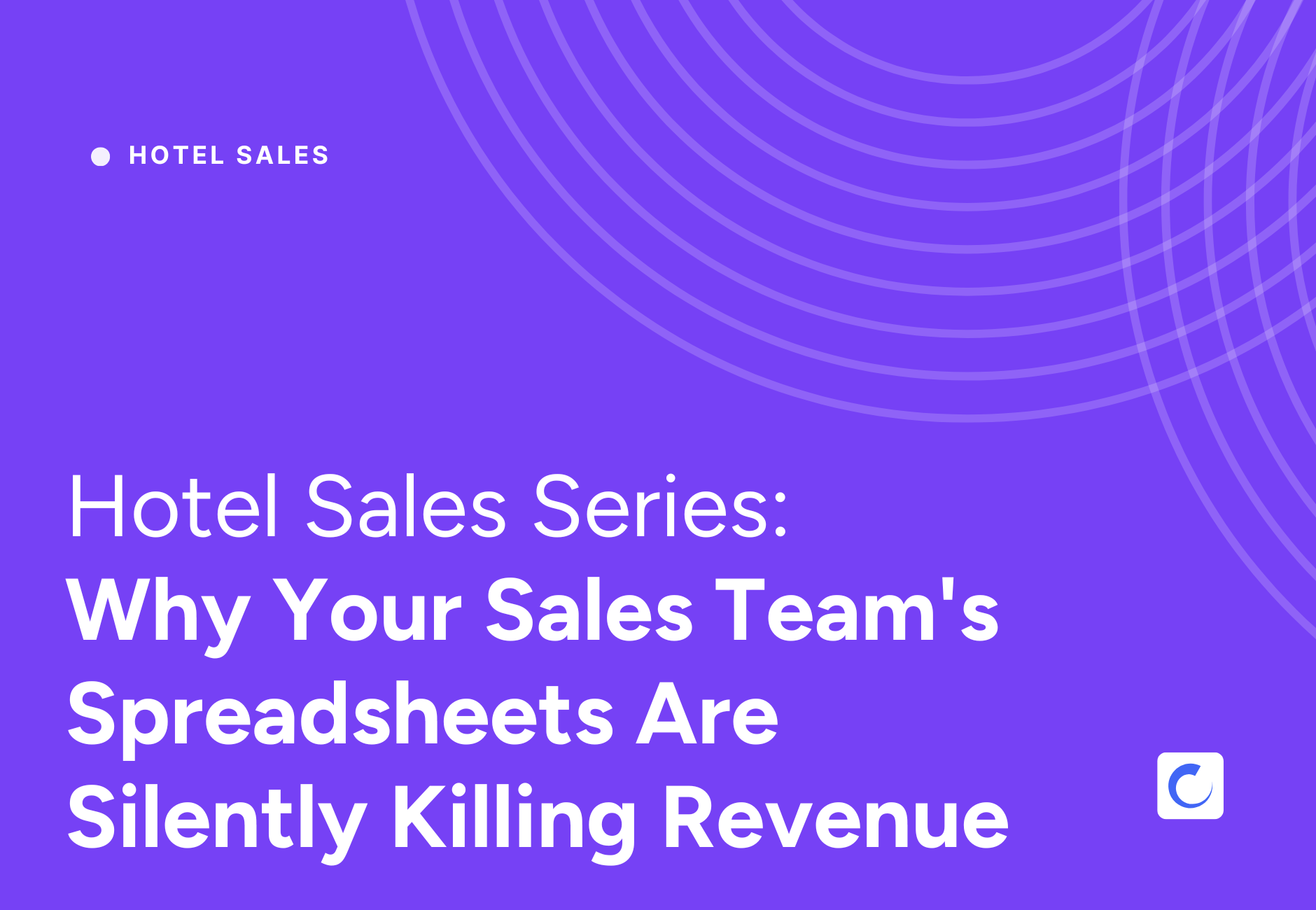
Hotel Group Sales - A New Approach
(How To Do Hotel Prospecting Like A Tech Company)
Are you looking for new hotel group sales strategies to implement at your hotel?
Have you ever heard phrases like “Internet Prospecting” or “Outbound Hotel Group Sales”?
These are the sales prospecting systems used at massive tech companies like Salesforce and Shopify and they are proven to work consistently and repeatedly.
From our experience, very few hotels are utilizing this method of prospecting. That’s unfortunate because it’s one of the most cost-effective, scalable ways to prospect for new business and it’s also one of the key techniques used by corporate head office sales teams for many of the big name hotel brands. In this article, we’ll teach you about how you can setup an outbound sales program at your hotel to prospect more efficiently and to get ahead of the competition.
Why Do Outbound Sales?
Outbound sales involves building lists of prospects and sending emails to those prospects to see if they are interested. This is done in a way that is not spammy because it uses personalization. Using modern technology that we’ll discuss later in this article, you can automatically insert relevant details about the prospect into your email, including their first name, business name and more. You can then automatically follow up until you receive a response.
It is important to note that hotel prospecting is not designed to be a replacement to more traditional prospecting like in-person drop-ins. We are in the hospitality industry and there will never be a replacement for face-to-face meetings. However what outbound prospecting can do is help you find the right potential prospects to meet with in person much faster so that when you are out on the road meeting people in person, you aren’t wasting precious time.
Outbound sales is an effective way to:
- Generate hotel group sales leads on demand
- Create a predictable system of lead generation
- Maximize your sales teams’ time and make them more efficient
- Supercharge your existing prospecting efforts
- Do sales on a limited budget
- Get predictable revenue through predictable lead generation
- Find in-person prospecting opportunities at scale
- Spend more of your time with interested prospects
- Get more results in less time
Basic Rules
There are a few basic rules to doing outbound sales properly.
First, if you can help it, try to have two people on your outbound hotel prospecting team at all times.
The first salesperson is typically called an SDR (Sales Development Representative) and the other is called an AE (Account Executive). Think of your AE as your existing Sales Manager or Director of Sales. They are the “closer” who meets with prospects in person and builds relationships with current and past customers.
The SDR’s job is to build lists of prospects through research (we’ll talk about how later), then to email the prospects, reply to emails, and funnel interested prospects to the AE. The AE’s job is to take over once the prospect indicates any interest. This means anything aside from a “not interested” or “do not contact me” email.
Understand that your SDR will need to build fairly large lists at the top of the sales funnel to get a few interested replies that they can send to the AE. This is the main reason for dividing the job into two people. It is possible to have one person do both roles, but in our research (and the research of major tech companies), the context switch of prospect research, list building, emailing and reply handling is a lot for one person to do in conjunction with lead management, sending proposals and contracts, meeting in person, closing business and more. You can be successful with one person to start, but the most successful teams operate with two people.
You’ll also want to have a clear customer profile and if you are like most hotels, you have more than one guest type. Identify the various types of guests who stay at your hotel and write a few notes about each one. You do not want to communicate with a leisure guest in the same way you would to a corporate traveller.
The last key rule is that you’ll want to be patient in developing this process. It can take 4 to 12 months to really get running correctly, but once it is, you will have a predictable sales system and a true competitive differentiator. We recommend you take baby steps and make small tweaks and improvements as you go as these will add up to major gains over time. Focus on removing obstacles for your prospects like confusing language, long emails, etc. Make sure the value proposition of your hotel to your guests is crystal clear and continually hone in on what messaging seems to be resonating with specific guest personas. The more you refine your personas and messaging, the more successful the program will be. Finally, once you find something that works, keep at it. You will eventually start to see a pattern emerge where you can start to predict bookings depending on the number of contacts you put at the top of the funnel when building your list.

10 Step Simplified Outbound Hotel Group Sales Process:
Step 1:
Create an ideal customer profile for each of your guest types.
We recommend working with your entire team on this.
Step 2:
- Have your SDR make a list of prospects (we recommend 20 to 50 a day).
- We recommend you make the list by using the following tools:
- Google (search for websites of companies who might do business with you)
- Linkedin (find the company and key people on linkedin)
- Google Sheets (add the website, linkedin profile, and key contacts to your spreadsheet)
- Hunter.io (use this tool to find the email addresses for the people on your spreadsheet)
Step 3:
Email the prospects using a tool like outreach.io or salesloft.com.
Another, more inexpensive option is woodpecker.co
-Aim for a 10% reply rate or higher
Step 4:
Ensure your SDR gets back to all email replies within 1 hour.
Do not make the mistake of doing all the hard work of building the list and sending the emails only to take days getting back to prospects. Research has found that you are much more likely to book the business if you respond within 10 minutes, however we feel an hour is more realistic.
Step 5:
Qualify the replies by separating the “interested” replies from the “not interested” replies.
Though this step seems easy, we have found that junior salespeople often mark “interested” replies as “not interested”. Create a clear definition in advance of what it means to be “interested” versus “not interested” and expect to spend some time educating your SDR on this using real life examples as time goes on.
Also ensure you do the following with all replies:
- Introduce interested replies to the AE (Hotel Group Salesperson) via email
- Get back to “not interested” replies
- Tag all replies in the software (Outreach, Salesloft, Woodpecker)
Step 6:
Have the AE do discovery calls with interested prospects. A discovery call is simply a phone call where the AE’s goal is to learn more about what the prospect is looking for. This is where you can ask them if they are loyal to a certain brand, how they book room nights today, what their hotel needs are and what they are looking for. Discovery calls aren’t just for sales but to help you build a better persona for each guest type.
Step 7:
Follow Up. Though you may get an interested reply or phone call, it doesn’t mean you have a warm hotel group sales lead. As a rule, teach all of your sales team members that they always need to have a next step with each prospect booked on the calendar. If the prospect isn’t ready yet, set an appointment to follow up in a month or two. If the prospect doesn’t reply to your email at all, follow up every 2-4 weeks for a maximum of 5 to 8 emails and then mark them as “not interested” if you still don’t hear back.
Step 8:
Setup meetings with qualified prospects on the phone, or in person. You can invite them for a site visit or meet them at their place of business, or you could do a phone call or a zoom. But we recommend connecting with interested prospects even if they are not going to be booking anything right now. When you find a prospect who is interested, that is the time that the AE needs to take over and start the traditional relationship building process. We also recommend that you add all interested prospects to your hotel email marketing campaigns as well.
Step 9:
Niche down and try to refine your Guest Persona.
As you send emails, you will start to see trends in your demographics. Look for patterns among “interested” versus “not interested” replies and niche down your persona. For example, talking to a VP at a Trucking company with 20-40 employees based in your city is very specific. If you can identify specific patterns like that, then we recommend refining your messaging to be tailored even more to them. You can include case studies and reviews from other customers like them and target your list building to be directed only toward people and companies in that niche. As a rule, the more niche you can get, the more successful and repeatable your outbound sales process will become.
Step 10:
Support outbound sales with marketing.
As we mentioned earlier, you should take all of your interested replies and add them to your email marketing campaigns, which should also be segmented by guest profile. You can then send updates, discounts, offers and deals to your prospects to continue to build a relationship with them.
A simple way to think about outbound hotel group sales is to picture a stadium, filled with all of your ideal prospects. What would you say that would get their attention and make them choose you over the competition? Once you identify that messaging, include it in your marketing and also in your outbound sales emails.

Summary Of The Simplified Outbound Hotel Group Sales Process:
- Create a Guest Persona
- Build the list using google, linkedin and hunter.io
- Email the list
- Follow up with prospects until they reply
- Handle replies - faster is better
- Mark Replies As “Interested”, “Not Interested” or “Maybe Later”
- Follow up with interested replies (phone and in person)
- Do discover calls and meetings with interested replies
- Qualify the prospects
- Ensure all prospects are part of a segmented email marketing campaign
Tips On List Building:
- Use Hunter.io, Onesource, Zoominfo or Inside View to find emails
- We have found regular linkedin works fine, there shouldn’t be a need to purchase tools like Linkedin Sales Navigator
- We do not recommend buying lists
- If you don’t have time to build your own lists, you can hire someone on websites like upwork.com, though we haven’t seen great results from doing this and do not recommend it because building lists is an essential part of understanding your Guest Persona in more detail
Tips On Sending The Emails:
- Use tools like Outreach.io, Salesloft or Woodpecker (do not mailchimp)
- You can also use Event Temple to send personalized emails at scale
- Use email, not the phone (cold calling doesn’t typically work as well)
- Send 20-50 emails per day (we recommend less to start)
- Aim for a 10% reply rate or higher which would be 2-5 emails per day
- Segment your campaigns by your Guest Persona
- Make your campaigns very niche - Don’t do a one-size-fits-all email blast
- Target them with highly relevant, personalized information for their niche
- Keep your email short, simple and plain text (2-5 sentences maximum)
- Ensure the email is optimized for mobile device (ensure they can respond to it in 30 seconds)
- Your attitude should be that of a researcher - not a “hard sell”
- State simply and honestly why you are reaching out
- Show credibility and talk about other companies they may know that you work with
- Ask one simple question
- Send emails before 9am or after 5pm
- Don’t send emails on Monday’s or Fridays (Sundays are okay)
- Expect a 20% bounce rate on your emails
- If someone is not interested, immediately take them off your list
- If people respond negatively, change your messaging or approach
- Think long term - build relationships and do not hard sell
Avoid:
- Don’t prospect your existing customers or past guests - email market to them instead
- Don’t duplicate prospect (especially to those who “aren’t interested”)
Tips On Email Replies:
- Tag all replies as “Interested”, “Not Interested” or “Maybe Later”
- The goal is to get as many interested replies as you can
- Create relationships with interested replies, even if they aren’t buying now
- Create templated responses for the most common questions you get in replies
- If you get “out of office” replies, read them as they can help you find different contacts at the company to reach out to
- If they say “maybe later”, ask if you can reach out to them every month or so, then add them to a email marketing campaign
- Remove bad emails and bounces from your list as they come in
- If your bounce rate is high, it means your list building is lacking quality and you need to spend more time finding better contacts
- If they say “no or not interested”, find out why
- It is okay to try with a different person at the same company if you get rejected, so long as you feel that the person replying is not the appropriate decision maker - just wait a week or two
US Laws On Outbound Emailing:
(This is our opinion and understanding at Event Temple only. It is not intended to be legal advice, please consult your legal counsel for accurate and up to date information).
- The subject line or header must not be misleading
- You must have a valid physical address in your email
- You must include a way for prospects to opt-out of future email communications
- If someone asks you to be removed from the list or for you to stop emailing them - ensure you comply with their request immediately and do not contact them again
For the email laws in other regions, we recommend you check with government websites before sending any outbound emails.
Key Management Metrics
>As you manage this program, you’ll want to track the following weekly:
- Number of emails added to list
- Number of emails sent
- Number of emails delivered (after bounces)
- Open rate of emails
- Number of email replies
- Number of interested replies
- Number of leads created
- Number of phone-call meetings set
- Number of in-person meetings set
- Number of proposals/contracts sent
- Number of bookings
- Revenue generated
- Sales cycle length
- Average deal size
Summary
- Hotel group sales takes many shapes and forms including:
- Outsourcing hotel group sales to a 3rd party
- Relying on leads from your hotel brand’s head office
- Hiring Hotel Management companies
- Not having any sales at all
- A Sales Manager or Director of Sales On-Property
- A Regional Sales Manager or DOS for a collection of properties
Regardless of how sales is setup at your hotel, you should know that the best management companies, hotel brands and 3rd party sales organizations are utilizing outbound sales to generate leads. There is no reason why you can’t use the same system that these organizations and many high tech companies use at your property too. As well, if you do rely on them, now you’ll have a better idea of how they do it and you can manage your expectations more fairly.
We’ve hoped you enjoyed learning about how to prospect for leads like a tech company. If you’d like to read further we recommend reading the book Predictable Revenue by Aaron Ross, which is considered the foundational book for outbound sales.




